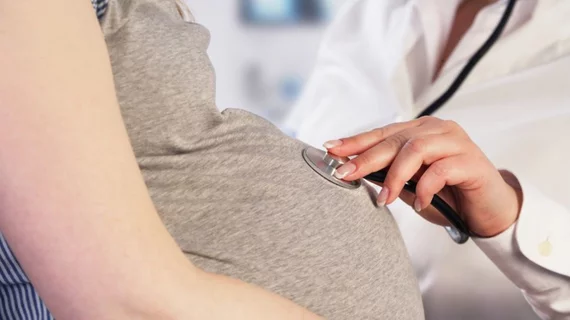Lung ultrasound ‘substantially’ influences treatment for pregnant women with COVID-19
Lung ultrasound continues to emerge as a useful modality for evaluating patients with COVID-19, and new research suggests it can “substantially” influence the clinical treatment course for pregnant women infected with the disease.
That study, published June 1 in the Journal of Ultrasound in Medicine, found treatment for the novel virus was either initiated or changed in 87% of patients based on lung ultrasound findings. While the study size was small—numbering only eight women—the researchers believe it is the largest case series to-date examining the modality’s effectiveness in soon-to-be mothers.
And given that obstetricians are very familiar with LUS and “quite proficient in the use of it,” performing such an exam after a routine ultrasound test may reduce the workload of radiologists along with the need for chest CT, “thereby minimizing the risk of transmission,” Murat Yassa, MD, with Sancaktepe Şehit Professor Dr. İlhan Varank Training and Research Hospital in Istanbul, and colleagues wrote.
Yassa and co-authors also noted that while the levels of radiation emitted during chest CT and radiography are considered “relatively safe” for pregnant women, many still feel unsure about undergoing such an exam. And that was evident in this study.
Three women with mild symptoms refused chest imaging because of potential risks to the fetus and breast. However, they did accept routine LUS which led to a change in their medical management.
For the current study, the doctors enrolled eight pregnant women with nasal/throat real‐time reverse transcription polymerase-chain reaction testing-confirmed COVID-19. Seven of the cases revealed serious lung involvement, with two women initially asymptomatic.
Among the seven instances of abnormal LUS findings, treatment was started in five patients and altered in two individuals. Speaking to the results of lung ultrasound imaging, the researchers promote the use of the modality in three specific scenarios.
“We recommend the use of LUS on the basis of the experience gained from these cases, particularly (1) on asymptomatic patients with positive PCR results for whom CT is not planned; (2) on patients with mild symptoms who do not give consent for chest CT; and (3) for US surveillance of asymptomatic patients with initial negative CT findings or follow‐up of the treatment response in symptomatic patients” the authors concluded.

